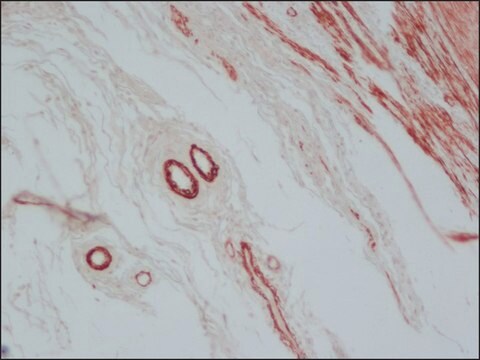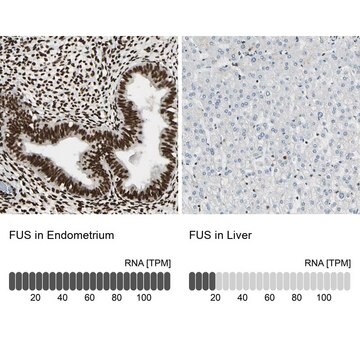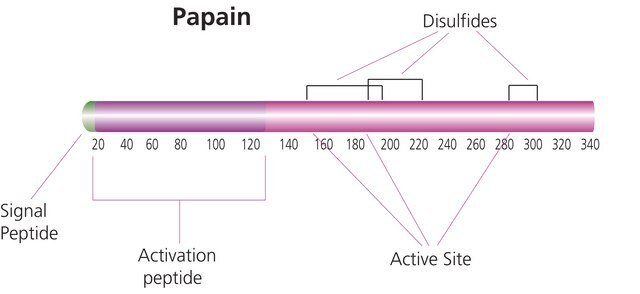T7028
Anti-Goat IgG (whole molecule)–TRITC antibody produced in rabbit
affinity isolated antibody, buffered aqueous solution
Sign Into View Organizational & Contract Pricing
All Photos(1)
About This Item
Recommended Products
biological source
rabbit
conjugate
TRITC conjugate
antibody form
affinity isolated antibody
antibody product type
secondary antibodies
clone
polyclonal
form
buffered aqueous solution
storage condition
protect from light
technique(s)
direct immunofluorescence: 1:100
immunohistochemistry (formalin-fixed, paraffin-embedded sections): 1:100
storage temp.
−20°C
target post-translational modification
unmodified
Looking for similar products? Visit Product Comparison Guide
General description
Binds all goat Igs.
Application
Conjugation of TRITC to goat IgG (whole molecule) antibody enables its use in immunofluorescent techniques.
Biochem/physiol Actions
IgG antibody subtype is the most abundant of serum immunoglobulins of the immune system. It is secreted by B cells and is found in blood and extracellular fluids and provides protection from infections caused by bacteria, fungi and viruses. Maternal IgG is transferred to fetus through the placenta that is vital for immune defense of the neonate against infections.
Physical form
Solution in 0.01 M phosphate buffered saline, pH 7.4, containing 15 mM sodium azide.
Disclaimer
Unless otherwise stated in our catalog or other company documentation accompanying the product(s), our products are intended for research use only and are not to be used for any other purpose, which includes but is not limited to, unauthorized commercial uses, in vitro diagnostic uses, ex vivo or in vivo therapeutic uses or any type of consumption or application to humans or animals.
Not finding the right product?
Try our Product Selector Tool.
Storage Class Code
10 - Combustible liquids
WGK
WGK 2
Flash Point(F)
Not applicable
Flash Point(C)
Not applicable
Personal Protective Equipment
dust mask type N95 (US), Eyeshields, Gloves
Choose from one of the most recent versions:
Already Own This Product?
Find documentation for the products that you have recently purchased in the Document Library.
Akira Inoue et al.
The Biochemical journal, 372(Pt 3), 775-785 (2003-03-11)
AUF1 (A+U-rich RNA binding factor) participates in the rapid decay of mRNAs in the cytoplasm. It is sometimes called heterogeneous nuclear ribonucleoprotein (hnRNP) D0; however, evidence for its characterization as an hnRNP protein has been scarce. S1 proteins A-D are
Koji Nishio et al.
Histochemistry and cell biology, 123(3), 263-273 (2005-03-03)
The cytoskeleton of senescent cells was systematically studied using senescent and young fibroblasts. In the cell senescence, skin fibroblasts extraordinarily produced vimentin in contrast to actin and tubulin, which were down-regulated. Among the focal adhesion proteins, paxillin and c-Src decreased
Ronald L Mellgren et al.
The Journal of biological chemistry, 282(49), 35868-35877 (2007-10-19)
Yeast two-hybrid experiments identified alpha(2)-Heremans-Schmid glycoprotein (human fetuin A) as a binding partner for calpain domain III (DIII). The tandem DIIIs of calpain-10 interacted under the most selective culture conditions, but DIIIs of m-calpain, calpain-3, and calpain-5 also interacted under
Alexandra Höllrigl et al.
FEBS letters, 523(1-3), 229-233 (2002-07-19)
Desmin fulfils important functions in maintenance of muscle cells and mutations in the desmin gene have been linked to a variety of myopathies. To ascertain the role of desmin's amino-terminal domain in muscle cells we generated embryonic stem cells constitutively
Dan Li et al.
Journal of virology, 87(4), 2072-2080 (2012-12-12)
N(pro) is a multifunctional autoprotease unique to pestiviruses. The interacting partners of the N(pro) protein of classical swine fever virus (CSFV), a swine pestivirus, have been insufficiently defined. Using a yeast two-hybrid screen, we identified poly(C)-binding protein 1 (PCBP1) as
Our team of scientists has experience in all areas of research including Life Science, Material Science, Chemical Synthesis, Chromatography, Analytical and many others.
Contact Technical Service








